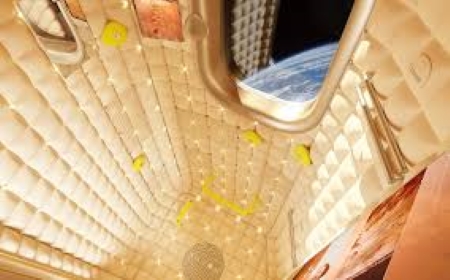January 29, 2020 – This week NASA selected Axiom Space to attach a habitable commercial module to the International Space Station (ISS). It will not be the first commercial addition to ISS. Bigelow Aerospace BEAM module in place on the station since 2016. The difference this time, however, is the Axiom module will be designed for habitability with the goal to create low-Earth orbit commercial destinations in space.
NASA Administrator, Jim Bridenstine, noted that the Axiom module agreement covers five years with a two-year option. Axiom will be using a port on ISS that is deemed for commercial partners.
NASA is working on making ISS a commercial business destination for U.S. industry to develop a space economy. To date, more than 50 companies are doing research on the ISS. Ten companies have installed commercial facilities on the station with much of the work being done to support innovative research and new industrial and manufacturing processes. Using the unique microgravity environment aboard ISS has made it an attractive place for NASA commercial partners.
Currently, 5% of crew resources and cargo capacity are reserved for commercial partners allowing for 175 kilograms (385 pounds) of supplies and equipment on each resupply mission. In addition, NASA is allowing commercial partners to send private astronauts to ISS and training them at the agency’s facilities to ensure they will not be at risk or a risk to the station’s operations.
Axiom plans to create a station module that will include crew quarters for up to seven, and a cupola for viewing Earth and the surrounding space. As of yet there is no timeline on delivery. One thing for sure, ISS will one day be replaced by a successor. The operational funding for it from NASA so far only goes to 2024 although it will likely be extended to 2028. With a five-year contract and a two-year option that means Axiom needs to get into gear quickly if it is to meet the current end-of-life 2028 date.
NASA also hopes that the new Axiom, the existing Bigelow module, and their potential successors will represent the next step in the development of near-Earth space. The ultimate goal will be the creation of independent commercial space facilities that fly free of the ISS in low-Earth orbit. From laboratories to roboticized microgravity manufacturing, to hotels, humanity will have extended its habitable reach beyond Earth’s atmosphere.








